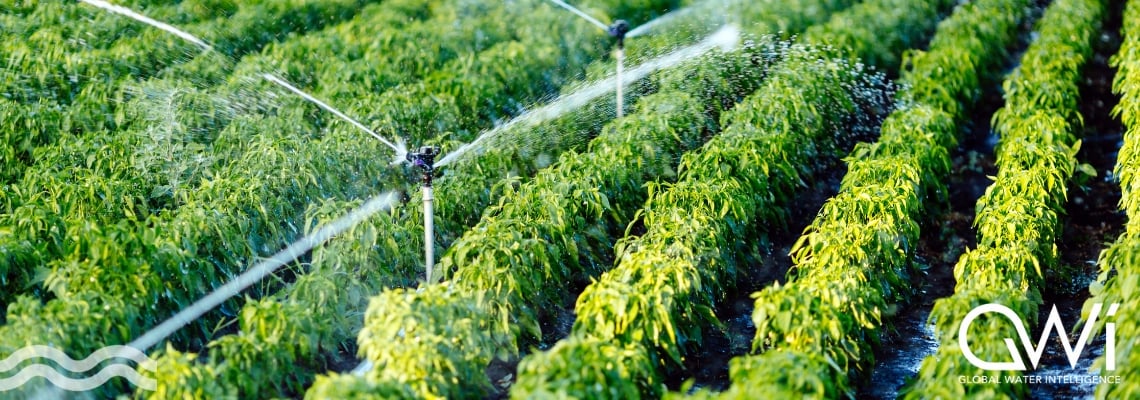 Knowledge partner GWI
Knowledge partner GWI
The European Union’s regulation on water reuse for agriculture recently became enforced in member states. Given the abundance of droughts affecting Europe and expectations that water supply will be further challenged in the coming years, this regulation has been widely welcomed as a positive step towards water circularity.
GWI answers key questions relating to the new regulation and what it could mean for the European water sector:
A: As of June 26th 2023, the EU’s regulation on the minimum requirements for water reuse (2020/741, “Water Reuse Regulation”) became applicable. This regulation sets a standard across the EU for water reuse in agriculture, helping to address water scarcity concerns whilst establishing common requirements to maintain public health.
By setting standards at an EU level, the European Commission aims to increase confidence in reclaimed water, as was stressed by the Commissioner for the Environment, Oceans and Fisheries, Virginius Sinkevicius: “Just as we are increasingly reusing other materials and rare commodities, urban wastewater can be successfully treated with the available technologies. That opens many possibilities for farmers who can use such reclaimed water safely for irrigation. With these new standards, consumers and farmers can be confident in the quality and safety of agricultural produce irrigated with reclaimed water.”
The regulation applies to a range of crop types: food crops for human consumption in a raw or unprocessed state (i.e. fruit), food crops that will undergo treatment processes before human consumption (i.e. will be cooked), or non-food crops. Four different quality standards for reclaimed water are outlined based on the category of crop it will irrigate and the level of contact that the crop will have with the reclaimed water.
A: The four quality classes for reclaimed water that are assigned by crop type, as specified by the regulations, are as follows:
For these four quality classes, the following minimum requirements must be met:

Source: GWI, European Commission
As can be seen above, for quality classes B-D, the reuse regulation appeals to the Urban Waste Water Treatment Directive’s biochemical oxygen demand (BOD) and total suspended solids (TSS) requirements of 25 mg/l O2 and 35 mg/l, respectively.
A: To achieve the required quality standards, wastewater will have to undergo secondary treatment as well as a further disinfection process – plus an additional filtration step if the A quality classification is desired. An example process diagram of a multiple-barrier approach to treat E. Coli to the recommended log10 reduction level for can be seen below:

Source: GWI, European Commission
This legislation can also be expected to increase the demand for quality measurement systems, to ensure the relevant quality standards are being achieved for the intended grade of agriculture, as well as ensuring that risk management measures are met. For reclaimed water in classes A and B, this will involve quality monitoring once a week, while for classes C and D this will be required twice a month. Additionally, turbidity monitoring must be continuous for Class A water.
Based on risk assessments that must be completed, additional treatment requirements to address a range of emerging contaminant concerns may also be required. This could, if a risk to health or environment is identified, introduce the need to treat for heavy metals, pesticides, disinfection by-products, pharmaceuticals, micro-pollutants or microplastics, and anti-microbial resistance. Further treatment could be required in these cases, including ozonation and/or activated carbon.
A: EU member states had the option to opt out of this regulation if it was deemed unnecessary or unhelpful in the country or in particular regions. Northern European countries have largely chosen this route, where water is less scarce and resultingly there would not be a market for reuse water for agriculture – with Finland, Latvia, Lithuania, Poland, Czech Republic, Austria, Slovakia, Slovenia and Croatia all opting out. Ireland and Denmark have yet to make a final decision.
Notably, Germany has banned water reuse in designated areas due to increasing attention surrounding emerging contaminants in the country. As such, federal states within Germany chose to exclude Water Protection Areas and Mineral Spring Protection Areas from the reuse regulation. Given water scarcity threats in some agricultural regions, however, Germany chose not to implement a country-wide ban.
A: In most EU countries, the cost of wastewater treatment is carried by the consumer in the form of tariff rates. For additional treatment to turn treated wastewater into a quality reclaimed water that is acceptable for agricultural purposes, the cost is likely to be borne by the treatment plant operator- who will in turn pass on costs to the agricultural end-user. Additional guidance produced by Germany about the application of regulation in the country includes this financing model.